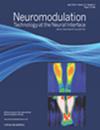Dorsal Root Ganglion Stimulation for Chronic Pelvic Pain Secondary to Endometriosis
IF 3.2
3区 医学
Q2 CLINICAL NEUROLOGY
引用次数: 0
Abstract
Introduction
Chronic pelvic pain (CPP) is a multifaceted condition that poses significant challenges in clinical management owing to its complex and varied pathophysiology, including neuropathic, somatic, visceral, and musculoskeletal components. Endometriosis is frequently associated with CPP, necessitating a comprehensive, multimodal treatment strategy. This approach typically includes physical and behavioral therapy, pharmacologic interventions, surgical management of endometriosis, and various pain-modulating procedures. Neuromodulation, particularly spinal cord stimulation (SCS), has been used in refractory cases; however, its use is often met with limited success and a notable rate of explants. This case series presents nine patients with intractable CPP secondary to endometriosis, unresponsive to conventional treatments, who were treated with dorsal root ganglion stimulation (DRG-S).
Materials and Methods
Between 2022 and 2023, ten patients with severe CPP secondary to endometriosis, unresponsive to various multimodal treatments—including previous interventional pain procedures, gynecologic surgery, and in some cases, SCS—were recruited for this prospective study. Of these, nine patients underwent permanent DRG-S, with bilateral L1 and S2 DRG-S leads placed (four leads per patient). Patients were assessed for pain intensity using the visual analog scale (VAS), narcotic consumption, and quality of life (QoL) using the 12-item short-form (SF-12) survey, with a 12-month follow-up period. Nonparametric statistical analyses were conducted using SPSS.
Results
One patient was excluded from the study owing to a lack of pain relief during the DRG-S trial. The remaining nine patients underwent permanent bilateral L1 and S2 DRG-S placement. Significant improvement in pain scores was observed and sustained throughout the follow-up period (VAS 9 ± 1.5–2 ± 2.0; p = 0.003), along with a marked reduction in opioid consumption, with four patients becoming completely free of narcotics (p = 0.046). SF-12 physical scores improved by 60.2 ± 7.8 (p = 0.006), and SF-12 mental scores improved by 45.9 ± 2.76 (p = 0.01).
Conclusion
Bilateral L1 and S2 DRG-S yielded robust and sustained outcomes, including significant improvements in pain scores, reduced narcotic consumption, and enhanced QoL over a 12-month follow-up period.
背根神经节刺激治疗子宫内膜异位症继发慢性盆腔疼痛。
慢性盆腔疼痛(CPP)是一种多方面的疾病,由于其复杂多样的病理生理,包括神经性、躯体性、内脏性和肌肉骨骼成分,在临床管理中提出了重大挑战。子宫内膜异位症经常与CPP相关,需要一个全面的,多模式的治疗策略。这种方法通常包括物理和行为治疗、药物干预、子宫内膜异位症的手术治疗和各种疼痛调节程序。神经调节,特别是脊髓刺激(SCS),已用于难治性病例;然而,它的使用往往遇到了有限的成功和显着的外植体率。本病例系列报告9例难治性CPP继发于子宫内膜异位症,对常规治疗无反应,采用背根神经节刺激(DRG-S)治疗。材料和方法:在2022年至2023年期间,招募了10例对各种多模式治疗(包括先前的介入性疼痛手术、妇科手术和某些情况下的scs)无反应的子宫内膜异位症继发严重CPP患者进行这项前瞻性研究。其中,9例患者接受永久性DRG-S,放置双侧L1和S2 DRG-S导联(每位患者4根导联)。采用视觉模拟量表(VAS)评估患者的疼痛强度,采用12项短表(SF-12)调查评估患者的麻醉消耗和生活质量(QoL),随访12个月。采用SPSS进行非参数统计分析。结果:一名患者因在DRG-S试验期间缺乏疼痛缓解而被排除在研究之外。其余9例患者接受永久性双侧L1和S2 DRG-S植入。观察到疼痛评分显著改善,并在整个随访期间持续改善(VAS 9±1.5-2±2.0;P = 0.003),同时阿片类药物的消耗也显著减少,有四名患者完全不使用麻醉剂(P = 0.046)。SF-12生理评分提高60.2±7.8分(p = 0.006), SF-12心理评分提高45.9±2.76分(p = 0.01)。结论:在12个月的随访期间,双侧L1和S2 DRG-S产生了稳健和持续的结果,包括疼痛评分显著改善,麻醉消耗减少,生活质量提高。
本文章由计算机程序翻译,如有差异,请以英文原文为准。
求助全文
约1分钟内获得全文
求助全文
来源期刊

Neuromodulation
医学-临床神经学
CiteScore
6.40
自引率
3.60%
发文量
978
审稿时长
54 days
期刊介绍:
Neuromodulation: Technology at the Neural Interface is the preeminent journal in the area of neuromodulation, providing our readership with the state of the art clinical, translational, and basic science research in the field. For clinicians, engineers, scientists and members of the biotechnology industry alike, Neuromodulation provides timely and rigorously peer-reviewed articles on the technology, science, and clinical application of devices that interface with the nervous system to treat disease and improve function.
 求助内容:
求助内容: 应助结果提醒方式:
应助结果提醒方式:


